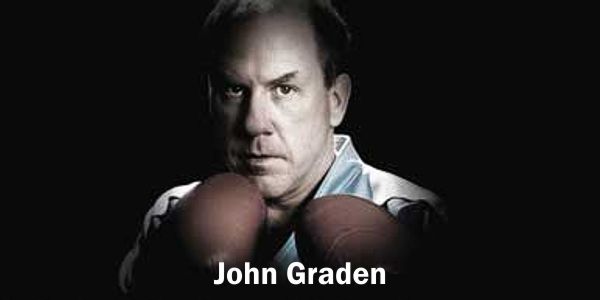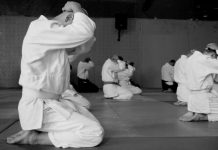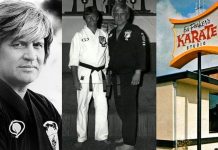A School Full of Pooh Bears is an excerpt from John Gradens’ book, The Truth About the Martial Arts Business, which is available at Martial Arts Teachers Website.
There is a great line attributed to Winston Churchill that ‘if you are in your 20s and are not a Liberal, you don’t have a heart. If you are in your 40s and not a Conservative, you don’t have a brain.’ While I’m not agreeing or disagreeing with him, his message relates clearly to how your belief system can change at different stages of your life and career.
Many of us went from the dungeon dojo to a more motivational school with a big emphasis on personal development. This attracted a huge kids’ market, but did it create better martial artists? I don’t think so. It’s pretty clear I’m not the only one, because we are seeing a return to a more adult-oriented and intense school, but not a return to the dungeon days of past.
The first time I visited New York City, I got into an argument with a black belt who was my host for the weekend in his small townhouse outside the Bronx. It was 1992, and I was in the midst of a transition for my school from a school of adult fighters to a school of kids, with an emphasis on positive development.
The argument rose from a conversation we had concerning his three-year-old son. I asked if he planned to have his kid take martial arts lessons. He made it clear that his son would learn to defend himself. I added that the martial arts are also really good for character development. The line had been drawn in the sand. He said he didn’t care about his kid “helping old ladies across the road.” He wanted his kid to be able to “knock someone on their ass” if needed.
I regurgitated a line that I had heard at a seminar that, “The world didn’t need more fighters, it needed more respect and courtesy.” He scoffed at the notion. He said his kid gets plenty of good messages from his favorite TV shows like Sesame Street. The boy attended church each Sunday with his mom and attended a good school. All of them taught him to be respectful and polite. What they didn’t teach him was how to get out of a fight. He wanted his boy to be able to handle himself. I told him his approach to martial arts was “old-school thinking.” He laughed, and we agreed to disagree.
Now, ten years later, not only am I a Dad, but I’ve also watched the martial arts evolve from a unique, cross-style vantage point. The more I think about it, the more I believe that my foul-mouthed friend was right, with some qualifications.
I certainly don’t feel that the movement towards character development has been bad for schools; it has been great. However, years ago I warned that if we continued to stray away from our core services and values, our schools would become little more than motivational day care centers. I think we are getting pretty close.
The life skills programs in schools too often are there for one reason, to overcome the concerns of the mothers of the kids in class. Most dads want their kid to be honest and respectful, but dads tend to understand the value of being able deal with bullies and life’s physical threats more than most moms.
There are many students who come to us from bad situations where they have few if any role models of good behavior, and this is where the martial arts school can shine. Still, I think that child will be more influenced by a powerful black belt conducting himself or herself in a respectful manner and not abusing his power than the reciting of a sterile end-of-class story about the tortoise and the hare.
In traditional martial arts, respect is a word that is emphasized from day one. The belts work as a great goal setting program, and, certainly, developing a never quit attitude is key to moving through the ranks.
To be clear, I see nothing wrong with organizing the lessons of martial arts into life skills to make sure they are articulated and apparent to the students and their families. That is like spice on the meal; it is not the meal.
Today it seems that instructors are focused more on their ability to get kids to recite pledges of good behavior and scream YES SIR than on their students’ capacity to “knock someone on their duffs” if they need to.
I know an excellent black belt who has transformed his school from adults to kids and now back to adults again. Like me, he had marketed to kids and cloned what the “Big Schools” were doing for character development. He began to pass kids for their “effort” in order to save their “self-esteem.” More and more he found his school had become a kids’ center with hundreds of children yelling “YES SIR!” at all the right moments during a speech.
Never mind that many of the kids really didn’t know what they were responding to. They just knew at the end of a question to scream “YES SIR!” He also noticed that his upper-ranks began to look pretty weak. His exams became celebrations of mediocrity with lots of smiles, high fives, and weak technical skills. While passing every kid in exams may be good for retention, that very fact means eventually you are going to have a school full of Pooh Bears. Kids who are soft and nice, but easy targets, despite the color of the belt.
In time, my friend began to dislike his own school. He didn’t want to be there. He missed the camaraderie and pride of creating black belts to whom he could teach fighting, without upsetting the student’s mommy.
Then one day, a threshold event occurred that left him disgusted and ready to make some serious changes. One of his 11-year-old Pooh Bears came running into the school, bleeding and crying. It seems another kid, who was no bigger or older, had popped him in the nose. The student had been standing in front of his karate school, wearing his uniform and his BLACK BELT while waiting for his parents. Somehow he got into an exchange of words with a neighborhood kid who punched or slapped him in the nose.
My friend was sickened. Not only had an unfortunate incident happened in front of his school, but one of his black belts was crying and bleeding. To paraphrase Tom Hanks in the movie A League of Their Own,” there’s no crying as a black belt!”
My friend was humiliated. That’s not supposed to happen. When we were students, stories of our school’s black belts defending themselves always ended with the bad guy in the hospital. That event was the catalyst for the end of the student creed and passing exams for merely making the effort to show up. It has taken him two years, but he now is back to nearly as many active students, with only 20 percent under the age of 12–a complete reversal of where he had been when the kid got popped.
He looks forward to going to his school each night and is enjoying running the school with a healthy mixture of personal development and realistic training and expectations.
My friend is one of the best black belts I know. He and I have talked about this new dynamic in the industry dozens of times. The conclusion that I’ve come to is that the introduction into the classroom of positive character development is a good “undercurrent” for a school. It’s the perfect counter-balance to good physical training and self-defense.
But many schools are out of balance. The line that, “We don’t just teach punching and kicking…” has become a cop out for not teaching strong core self-defense and technical skills. Don’t apologize for teaching punching and kicking (or grappling).
Technical execution and self-defense have become an afterthought to personal development. Why? It’s a heck of a lot easier to teach a kid to act like a Boy Scout with a belt than to take the time, effort, and honesty required to produce a black belt who can defend himself or herself.
But, as many people have discovered, in time you may be teaching at a school you hardly recognize. You will have students who stand up straight when shaking hands during their “polite greetings” but who have rubber backbones.
Now we have guys promoting that the “Ultimate Black Belt” is earned only when you’ve spent time in a wheelchair to “understand the plight of the disabled” or spent a day blindfolded so you too can feel the pain of someone who is “sight challenged.” I think this is “reality challenged.” This sounds more like a freshman sociology course or the Peace Corps than the martial arts.
It’s important to be OK with the fact that martial arts can’t be all things to all people. The very term martial means military. Military relates to matters of war. This doesn’t mean each class is devoted to killing or war tactics; it means that our foundation is one of peace through superior firepower. It’s a program of self-respect and self-worth that starts with the concept that ‘I am worth protecting. No one will touch me without my permission.’
In a good program, as your skills improve, your sense of contribution, respect, and responsibility increases as well. To me, the ultimate black belt is a noble warrior who uses the martial arts as a method of personal and physical growth. It is a very individual pursuit that is better taken eyes wide open than blindfolded.
These are core attitudes and benefits that were inherent in the arts long before any student creed or “Ultimate Black Belts.”











